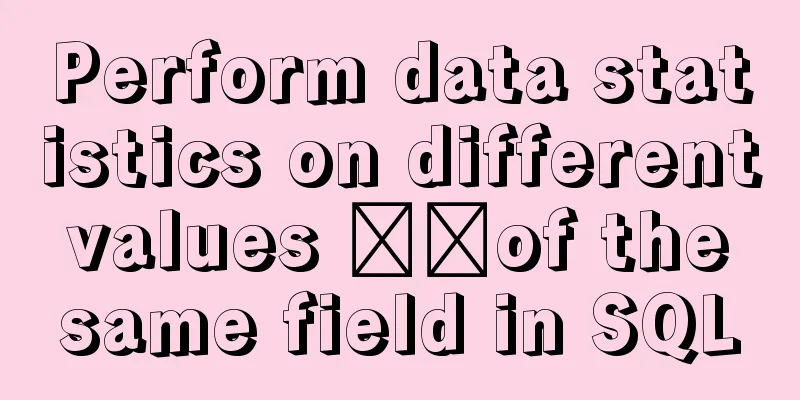Use Vue3 for data binding and display list data

1. Comparison with Vue21. New features of Vue3
2. Comparison of response principles between Vue2 and Vue3 shortcoming:
Solution:
3. Rewrite array methods to detect array changes advantage:
shortcoming:
The above quotes "[Comparison of Vue2 and Vue3]" (https://www.cnblogs.com/yaxinwang/p/13800734.html) 4. Intuitive experienceAt present, Vue2 is still the main one in actual work 2. Data binding example using Vue3In the previous article Vue3 integrated HTTP library axios details, we have realized the return of background data and displayed it on the front page (although it is in the console), but this only means that 90% of it has been completed. The next step is how we return data from the background interface and how to display it on the page. 1. Use ref to implement data binding We still need to modify it in
<template>
<a-layout>
<a-layout-sider width="200" style="background: #fff">
<a-menu
mode="inline"
v-model:selectedKeys="selectedKeys2"
v-model:openKeys="openKeys"
:style="{ height: '100%', borderRight: 0 }"
>
<a-sub-menu key="sub1">
<template #title>
<span>
<user-outlined />
subnav 1
</span>
</template>
<a-menu-item key="1">option1</a-menu-item>
<a-menu-item key="2">option2</a-menu-item>
<a-menu-item key="3">option3</a-menu-item>
<a-menu-item key="4">option4</a-menu-item>
</a-sub-menu>
<a-sub-menu key="sub2">
<template #title>
<span>
<laptop-outlined />
subnav 2
</span>
</template>
<a-menu-item key="5">option5</a-menu-item>
<a-menu-item key="6">option6</a-menu-item>
<a-menu-item key="7">option7</a-menu-item>
<a-menu-item key="8">option8</a-menu-item>
</a-sub-menu>
<a-sub-menu key="sub3">
<template #title>
<span>
<notification-outlined />
subnav 3
</span>
</template>
<a-menu-item key="9">option9</a-menu-item>
<a-menu-item key="10">option10</a-menu-item>
<a-menu-item key="11">option11</a-menu-item>
<a-menu-item key="12">option12</a-menu-item>
</a-sub-menu>
</a-menu>
</a-layout-sider>
<a-layout-content
:style="{ background: '#fff', padding: '24px', margin: 0, minHeight: '280px' }"
>
{{ebooks}}
<pre>
{{ebooks}}
</pre>
</a-layout-content>
</a-layout>
</template>
<script lang="ts">
import { defineComponent,onMounted,ref } from 'vue';
import axios from 'axios';
export default defineComponent({
name: 'Home',
setup(){
console.log('set up');
const ebooks = ref();
onMounted(()=>{
axios.get("http://localhost:8888/ebook/list?name=spring").then(response =>{
console.log("onMounted");
const data=response.data;
ebooks.value=data.content;
})
})
return {
eBooks
}
}
});
</script>
Knowledge points:
Recompile, start the service, and see the results as follows:
2. Use reactive to implement data binding Similarly, modify it in
<template>
<a-layout>
<a-layout-sider width="200" style="background: #fff">
<a-menu
mode="inline"
v-model:selectedKeys="selectedKeys2"
v-model:openKeys="openKeys"
:style="{ height: '100%', borderRight: 0 }"
>
<a-sub-menu key="sub1">
<template #title>
<span>
<user-outlined />
subnav 1
</span>
</template>
<a-menu-item key="1">option1</a-menu-item>
<a-menu-item key="2">option2</a-menu-item>
<a-menu-item key="3">option3</a-menu-item>
<a-menu-item key="4">option4</a-menu-item>
</a-sub-menu>
<a-sub-menu key="sub2">
<template #title>
<span>
<laptop-outlined />
subnav 2
</span>
</template>
<a-menu-item key="5">option5</a-menu-item>
<a-menu-item key="6">option6</a-menu-item>
<a-menu-item key="7">option7</a-menu-item>
<a-menu-item key="8">option8</a-menu-item>
</a-sub-menu>
<a-sub-menu key="sub3">
<template #title>
<span>
<notification-outlined />
subnav 3
</span>
</template>
<a-menu-item key="9">option9</a-menu-item>
<a-menu-item key="10">option10</a-menu-item>
<a-menu-item key="11">option11</a-menu-item>
<a-menu-item key="12">option12</a-menu-item>
</a-sub-menu>
</a-menu>
</a-layout-sider>
<a-layout-content
:style="{ background: '#fff', padding: '24px', margin: 0, minHeight: '280px' }"
>
<strong>Using ref for data binding results:</strong><p></p>
{{ebooks1}}
<p></p>
<pre>
{{ebooks1}}
</pre>
<strong>Using ReactiveF for data binding results:</strong><p></p>{{ebooks2}}
<p></p>
<pre>
{{ebooks2}}
</pre>
</a-layout-content>
</a-layout>
</template>
<script lang="ts">
import { defineComponent,onMounted,ref,reactive,toRef} from 'vue';
import axios from 'axios';
export default defineComponent({
name: 'Home',
setup(){
console.log('set up');
//Use ref for data binding const ebooks=ref();
// Use reactive data binding const ebooks1 = reactive({books:[]})
onMounted(()=>{
axios.get("http://localhost:8888/ebook/list?name=spring").then(response =>{
console.log("onMounted");
const data=response.data;
ebooks.value=data.content;
ebooks1.books=data.content;
})
})
return {
ebooks1: ebooks,
ebooks2:toRef(ebooks1,"books")
}
}
});
</script>
Knowledge points: Need to import Recompile, start the service, and see the results as follows:
3. Final Thoughts The sense of accomplishment that front-end development gives people is more direct, because you can see it intuitively, unlike the business logic code in This is the end of this article about using Vue3 for data binding and displaying list data. For more relevant Vue3 data binding and displaying list data content, please search for previous articles on 123WORDPRESS.COM or continue to browse the following related articles. I hope everyone will support 123WORDPRESS.COM in the future! You may also be interested in:
|
<<: MySQL password contains special characters & operation of logging in from command line
>>: How to use docker to deploy dubbo project
Recommend
Solve the problem of invalid utf8 settings in mysql5.6
After the green version of mysql5.6 is decompress...
A pitfall and solution of using fileReader
Table of contents A pitfall about fileReader File...
Let's talk in detail about whether setState in React is a macro task or a micro task
Table of contents Preface Is the interviewer aski...
Problems with index and FROM_UNIXTIME in mysql
Zero, Background I received a lot of alerts this ...
MySQL complete collapse query regular matching detailed explanation
Overview In the previous chapter, we learned abou...
Tutorial on installing nginx in Linux environment
Table of contents 1. Install the required environ...
Three ways to create a gray effect on website images
I’ve always preferred grayscale images because I t...
Detailed explanation of several storage methods of docker containers
Table of contents Written in front Several storag...
Tutorial on installing MySQL database and using Navicat for MySQL
MySQL is a relational database management system ...
How to add, delete and modify columns in MySQL database
This article uses an example to describe how to a...
Make your website run fast
Does performance really matter? Performance is im...
Use of MySQL official export tool mysqlpump
Table of contents Introduction Instructions Actua...
Implementation of forced line breaks and non-line breaks in div, td, p and other containers in HTML
1. Force no line break and end with an ellipsis. C...
Introduction to MyCat, the database middleware
1. Mycat application scenarios Mycat has been dev...
Quickly learn MySQL basics
Table of contents Understanding SQL Understanding...











